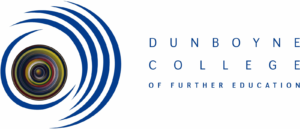Course Description
ECG Rhythms and Interpretation
Alison
Learn how to perform an electrocardiogram (ECG) to detect cardiac abnormalities in this free online healthcare course. This electrocardiography course is designed by experienced, board-certified physicians and veteran Advanced Cardiovascular Life Support (ACLS) instructors and explains how to interpret the core rhythms of electrocardiograms (ECG). We discuss pathophysiology, common etiologies, clinical manifestations, and ECGs’ defining criteria and features. We also examine the ECG presentation of the 15 core rhythms, including fibrillation, AV blocks, and more.
| Course Code | 6043 |
| College Name | Alison |
| Course Category | Health Care, Healthcare |
| Course Type | Online Learning |
| Course Qualification | CPD Certificate |
| Course Location | Online Course |
| Delivery mode | |
| Course Fee | Free |
| Course Duration | 1.5-3 hours |
| Entry Requirements | Like all courses on the Alison Free Learning platform this is a free, CPD-accredited course. A Graduate can choose to buy a certificate or diploma upon successful completion of a course, but this is not required or necessary. At Alison we believe that free education, more than anything, has the power to break through boundaries and transform lives. Alison is the world’s largest free online empowerment platform for education and skills training, offering over 5000 CPD accredited courses and a range of impactful career development tools. It is a for-profit social enterprise dedicated to making it possible for anyone, to study anything, anywhere, at any time, for free online, at any subject level. Through our mission, we are a catalyst for positive social change, creating opportunity, prosperity, and equality for everyone. |
| Career Path | In This Free Course, You Will Learn How To • Identify normal sinus rhythms on an electrocardiogram (ECG) • Distinguish between normal sinus rhythms and abnormal ECG patterns in potential cardiac disorders • Analyse ECG waveform morphology to assess the presence of atrial and ventricular hypertrophy • Explain the underlying mechanisms involved in different ECG rhythm patterns • Discuss the physiological and pathological factors that lead to specific ECG rhythm abnormalities • Categorise ECG rhythms into groups based on waveform patterns and clinical significance • Recognise and differentiate between atrial and ventricular fibrillation, bradycardia and tachycardia • State how the adult Cardiac Arrest Algorithm helps manage cardiac arrest in adult patients • Outline the importance of post-cardiac care • Review the basic life support (BLS) procedures provided by one or two healthcare personnel • Summarise the basics of cardiopulmonary resuscitation (CPR) • Distinguish between the CPR procedure used on adults and infants |



Comments, Questions & Reviews